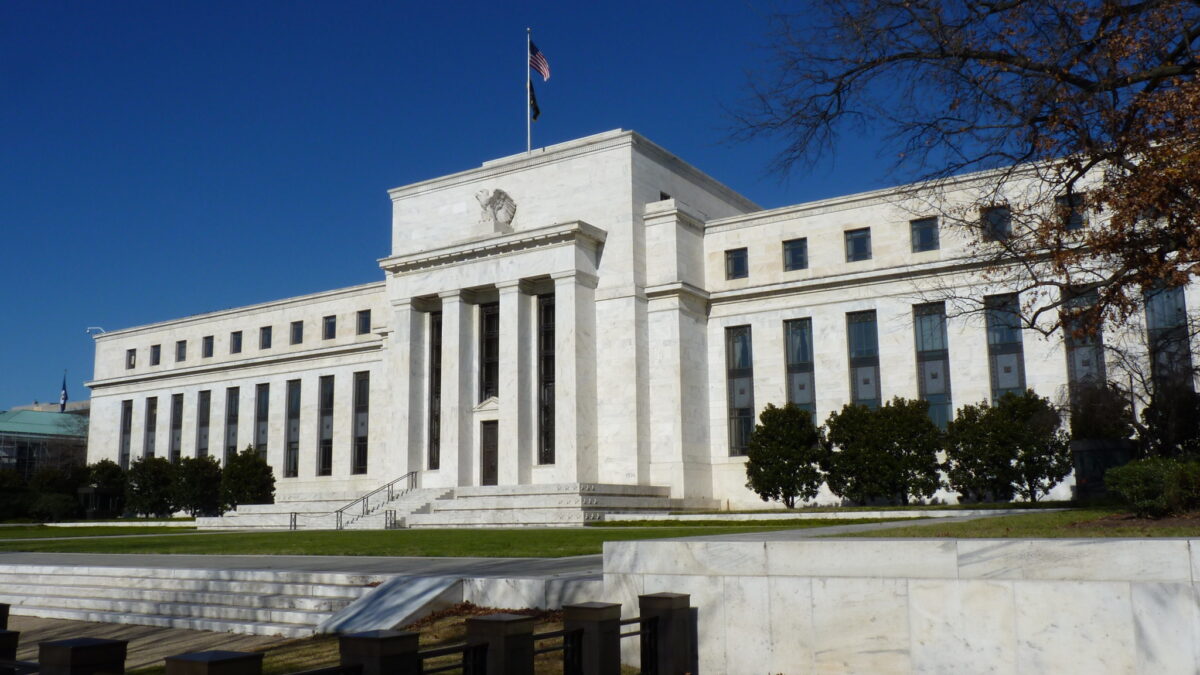After the economy created a higher-than-expected number of jobs in March, analysts continued asking a persistent question: Why do Americans remain so sour about the nation’s economy?
Several days later, the release of inflation numbers that exceeded expectations for the third straight month provided the obvious explanation. The March numbers, which show inflation remains above Federal Reserve targets and above expectations, made even the corporate media raise questions about the economy’s future direction.
But well before the latest inflation numbers came out, the answer has been staring Americans in the face for months — every week, when they go to the grocery store. Because the nation’s families see the effects of “Bidenflation” on their wallets, the rapid price run-up over the past several years will keep them in a gloomy mood.
Recession Not in Sight?
Two articles published in The Wall Street Journal on the same day explain the disconnect. The first, a column by Greg Ip titled, “What’s Wrong with the U.S. Economy? It’s You, Not the Data,” listed statistics showing strong economic growth over the past year, coupled with a slowing of inflation.
The column looked at various polls and surveys to try to explain the disconnect between the data underlying the economy’s supposed strength and public opinion regarding it. Among other theories, Ip noted that the public seems more positive about the economy in their own state than nationwide. This is similar to how the public generally hates Congress as a whole but approves of their own representative. Ip even suggested that negative media coverage could cause economic pessimism. (Seriously.)
Higher Prices, Higher Pessimism
The lead paragraph of another article published five hours later provides a ready explanation: “The Wall Street Journal analyzed NielsenIQ data reflecting a selection of commonly purchased items that were valued at a total of $100 in 2019. Today, that same grocery list costs 36.5% more. … Shoppers would have to remove almost $37 of items to spend the same amount as in 2019.”
When, as the Journal survey noted, prices of hundreds of grocery items, including things like cooking oil, beef, mayonnaise, and applesauce, have all increased by more than 50 percent over the past five years, it’s little wonder that the average consumer feels beleaguered. The Journal interviewed one retiree in Vermont who said that “she tries to think of trips to the store like procurement raids depicted in apocalyptic novels, where the goal is to stock her fridge, freezer, and pantry for as little money as possible.”
Note to Greg Ip: If Americans view a trip to the supermarket — which most families make once per week, if not more often — as an exercise nearly as intense as a zombie apocalypse, they’re not going to feel positive about the economy any time soon.
Inflation Breeds Widespread Pain
Numerous factors explain why inflation has such an overarching effect on consumers’ collective psyche.
First, as Ip noted in his column, some consumers don’t understand the difference between disinflation — prices rising but at a lower level, for instance by rising only 3 percent instead of 10 percent — and deflation, where prices actually fall. While gas prices can fluctuate up and down based on market conditions, most other prices only go up. And telling people who remain irate about a 10 percent price increase last year that the same product will “only” rise by 3 percent this year will not only not comfort most families, it will quite likely enrage them.
Second, because people buy groceries and gas regularly, they generally see and know those prices far more than other less frequent items. In theory, I could save far more by getting a good price on a new car, furniture, or some other major purchase than I would spend on higher grocery costs in a given year. But I don’t have a good sense of what those items cost. By contrast, I immediately noticed when Trader Joe’s increased its price of bananas from 19 to 23 cents — and that price increase, the first on Trader Joe’s bananas in over two decades, made national news as well.
Finally, while unemployment has a concentrated blow, inflation’s effects are much more diffused and widespread. Particularly on household staples like groceries and energy costs, inflation affects every family. By contrast, even in a period of relatively high unemployment, the majority of Americans still have jobs, and some families could still remain rather upbeat about their economic present and future.
For all these reasons, it makes perfect sense why the American people, who have effectively suffered a pay cut due to the pernicious effects of inflation over the past few years, remain concerned about the economy. The better question is why Congress refuses to stop spending money it doesn’t have in ways that will cause inflation to persist, and the national debt to grow ever higher.









